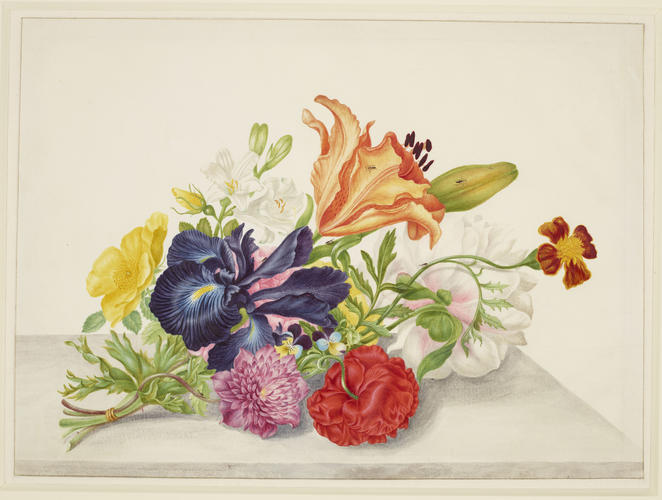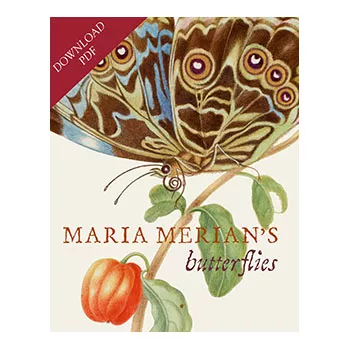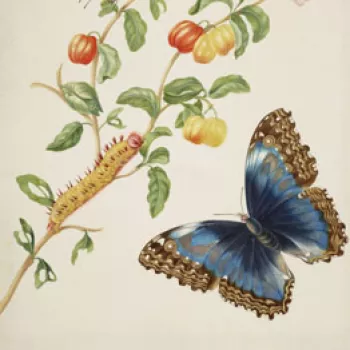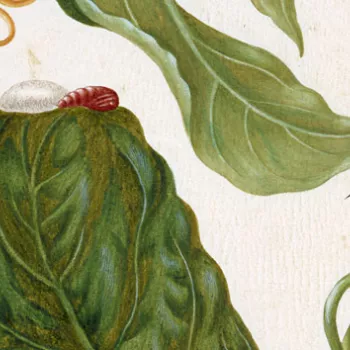Still life with flowers tied at the stems c.1705?
Watercolour and bodycolour with gum arabic on vellum | 26.2 x 35.9 cm (whole object) | RCIN 921234

Workshop of Maria Sibylla Merian (1647-1717)
Still life with flowers tied at the stems c.1705?
-
A watercolour of flowers including Austrian Briar (Rosa foetida), Tiger Lily (Lilium bulbiferum), German Iris (Iris germanica), Heartsease (Viola tricolor) and French Marigold (Tagetes patula). Merian began her career as a flower painter, and this sheet is typical of the decorative studies of flowers that she continued to make throughout her life, in addition to her scientific works. Merian's watercolours have been kept in albums for most of their history, and because they have rarely being exposed to light the colours are still vivid.
Maria Sibylla Merian was the daughter of the printmaker Matthias Merian, and the step-daughter of the still-life painter Jacob Marrel. She was a talented artist, who was trained in flower painting by Marrel. From an early age, she was fascinated by insects and their life cycles, and undertook research into the phenomenon of metamorphosis, which was then only partially understood. She published her findings in a series of books, illustrated with beautifully-composed plates in which each insect life-cycle was illustrated on the appropriate food plant. In 1699, having encountered exotic insects in the cabinets of natural history collectors in Amsterdam, Merian and her younger daughter Dorothea set sail for Suriname, in South America, which was then a Dutch colony. There, they studied the life cycles of Surinamese insects until their return to Europe in 1701. Merian published her Surinamese research as the Metamorphosis Insectorum Surinamensium (The Metamorphosis of the Insects of Suriname) in 1705. The book was very well-received, and by her death Merian was well-regarded throughout Europe as both an entomologist and an artist.Provenance
Dr Richard Mead (1673–1754); his sale (London, Abraham Langford, 13–16 January 1755, lot 66), where purchased by an unknown collector; sold 15 June 1768 (London, Paterson and Eve, lot 572), where purchased by Sir John Hill via Wilson; George III by c.1810
-
Creator(s)
Acquirer(s)
-
Medium and techniques
Watercolour and bodycolour with gum arabic on vellum
Measurements
26.2 x 35.9 cm (whole object)
Other number(s)
RL 21234Alternative title(s)
Unused design for the Metamorphosis Insectorum Surinamensium










